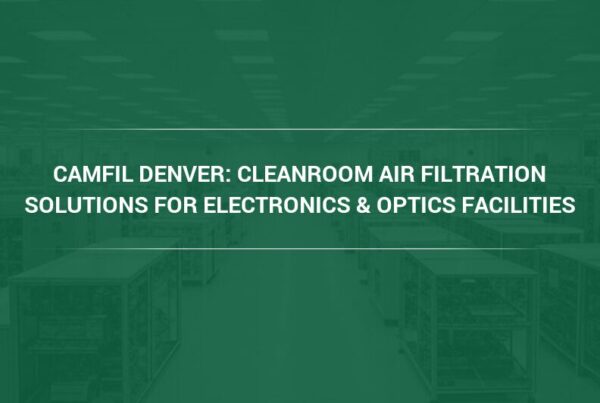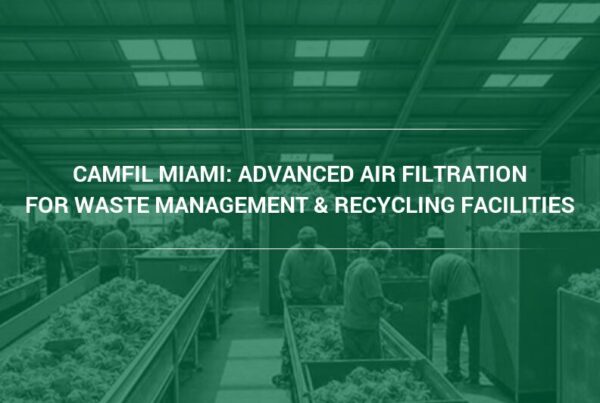Industrial air filters and commercial air filtration units are capable of neutralizing major indoor air pollutants that harm museums and museum staff.
Museums are where some of the most important artifacts of our society’s culture and history are kept. If a collection in a museum is damaged, part of our history is lost along with the damage done to the item or artifact. Therefore, it’s important to preserve collections in museums. Unfortunately, museum collections can easily be damaged by a variety of indoor air pollutants. These pollutants can wear away at a canvas, degrade rock and limestone, and dissolve fragile paper or wooden artifacts.
Not only can the exhibits and collections in a museum themselves be damaged, the health of workers and visitors to a museum can also be damaged by indoor air pollutants. For these reasons, the use of high efficiency commercial air filtration units is highly advised. High efficiency commercial air filters protect both the health of the people within a museum and the integrity of the exhibits.
Commercial Air Filtration Units Capture Pollutants Like Ozone, Sulfur Dioxide and Particulate Matter
There are many different kinds of air pollutants. Pollutants can be found both indoors and in the ambient air outdoors. While many people are aware of the problems of outdoor air pollutants, due to exposure to photochemical smog and pollutants emitted from industrial facilities, fewer people think about the harm that indoor air pollutants can do. It’s difficult to draw a strict dividing line between indoor pollutants and outdoor air pollutants, as one can easily become the other. Yet some forms of air pollution are more common indoors, while others are more common outdoors.
Ozone is by far the most detrimental pollutant that can interfere with preserving museum items. It is nature’s oxidizer and it is capable of breaking down rubber, plastic, wood and paint. In the museum environment, it can lead to the fading of organic artists’ pigments and textile dyes that are present in paintings, tapestries and historically important clothing exhibits.
Ambient outdoor air pollution, introduced into museums by ventilation air and building leakage, includes the various pollutants emitted by the combustion of fossil fuels. These air pollutants are compounds such as sulfur dioxide and nitrogen oxide. Sulfur dioxide comes primarily from the combustion of fossil fuels in industrial facilities and power plants, as levels of sulfur in fuel for vehicles have dropped dramatically over the past few decades. Sulfur dioxide is a colorless gas with a strong odor and it can contribute to the development of smog and acid rain. Nitrogen oxides are different nitrogen-based pollutants that can also contribute to smog and acid rain. Nitrogen oxides are released by fossil fuel combustion in cars, power plants and industrial facilities.
“Common indoor air pollutants that can damage exhibits and collections include formaldehyde, hydrogen sulfide, ozone, and other volatile organic compounds. Volatile organic compounds (VOCs) are a category of air pollutants that can react with other pollutants in the air to form dangerous and toxic chemical compounds,” said Camfil’s Charlie Seyffer, Manager of Marketing & Technical Materials and 37-year ASHRAE member and active committee participant. “Some VOCs can react with heat and sunlight to create ground-level ozone. Unlike ozone in the upper atmosphere, ground-level ozone is a dangerous air pollutant. VOCs can be released by many different sources including cleaning chemicals, paints, and varnishes.” (1)
Normal airborne particles consisting of mold, dust, dead skin cells and tiny VOC particles, can make up a form of air pollution called particulate matter. Particulate matter (PM) is a form of air pollution made of various tiny, yet dangerous particles that can enter the human lungs and bloodstream.
Dust and dirt can be tracked inside by visitors and staff, dead skill cells come from both visitors and staff, and mold can develop anywhere where standing water is found, such as bathrooms and basements.
Commercial Air Filtration Systems Can Protect Fragile Artifacts from Degradation
Commercial air filters are critical for museums to have because poor air quality within the facility can easily damage exhibits and collections. While the damage caused by any individual source of an air pollutant seems negligible, the results of exposure to all forms of pollution are cumulative and over time priceless artifacts can easily be damaged or destroyed beyond repair.
One of the issues that museums must grapple with is where to store their exhibits. Museum artifacts not on public display are often stored in areas that go uncontrolled for various airborne pollutants. The airborne pollutants in storage areas can come to rest in display cases alongside artifacts or within the storage units created to hold exhibits. As these pollutants enter the display case or storage case they can cause significant degradation and deterioration of the exhibit.
Acids like acetic acid and formic acid can wear away at the surface of a variety of materials, making them dangerous to whole collections. Chemicals sometimes used to clean or preserve can be dangerous to exhibits uncontrolled, and compounds like formaldehyde, bleach, and hydrogen sulfide can easily damage exhibits.
Museums are usually full of fragile objects like paintings, books, documents, and sculptures. Particulate matter pollution is typically abrasive in nature, and because of this, it can wear away at these fragile artifacts over time.
Commercial Air Purifiers Protect The Lungs of Visitors and Museum Staff
Not only is the condition and integrity of museum collections important, the health of visitors to the museum and the museum staff is important as well. Both organic and inorganic air pollutants can harm the lungs and other organs of people exposed to them.
Air pollutants like ozone, nitrogen oxide and sulfur dioxide can cause asthma attacks in those with the condition. Continuous exposure to ozone, sulfur dioxide and nitrogen oxide can decrease overall lung function and cause various cardiovascular ailments by making the lungs more vulnerable to infection.
“VOCs like formaldehyde, acetaldehyde, and hydrogen sulfide can come from the off-gassing of composite building materials like boards, carpets, and paints,” warns Seyffer. “These compounds are thought to be carcinogenic in nature, meaning they lead to an increased risk of developing cancer.” (2)
Exposure to particulate matter pollution can damage much of the body, including the central nervous system and lungs. Exposure to PM can cause stroke, heart attack, decreased lung function, increased risk of lung cancer and chronic obstructive pulmonary disease.
Using Commercial HVAC Air Filters and Ventilation
Commercial HVAC air filters can trap the pollutants found in museums, whether they are indoor air pollutants or outdoor air pollutants. Air filtration is the removal of particles from the air by using high-quality air filters in HVAC systems. Filtered ventilation should also be used to help reduce concentrations of harmful air pollutants.
Museum storage buildings often have low air exchange rates and they should be controlled with ventilation and filtration. A high air exchange rate is important for a building as it dilutes built up concentrations of indoor air pollutants. The optimal air exchange rate for a building can be ascertained by a professional, who will know if higher air exchange rates or air filtration rates are needed to control pollutants levels within a building.
Air Filtration And Ventilation Should Be Combined with Source Control Strategies
A combination of source control methods, filtration, and ventilation is one of the best ways to keep air quality within a building high. Source control strategies are those that are capable of stopping the emission of air pollutants where they develop. Museums can and should be cleaned of dirt, dust, and debris. Cleaning should be done with eco-friendly cleaners that limit the release of particles or VOCs back into the air .
“The emission of VOCs can also be reduced by implementing smart painting and maintenance strategies,” advises Seyffer. “Low aerosol painting methods should be used, and maintenance workers should be careful about dislodging debris or dust when cleaning. Mold is a persistent threat, especially in more humid climates. Museum bathrooms, basements, storage units, and ventilation systems should be frequently checked for the presence of moisture or mold.” (3)
Camfil USA commercial air filters can provide your museum with the filters you need to protect the artifacts and people within them. We will also support you with advice from air filter professionals. Click here to contact us today.
Lynne Laake
Camfil USA Air Filters
T: 888.599.6620,
E:Lynne.Laake@camfil.com
F: Friend Camfil USA on Facebook
T: Follow Camfil USA on Twitter
Y: Watch Camfil Videos on YouTube
Sources:



